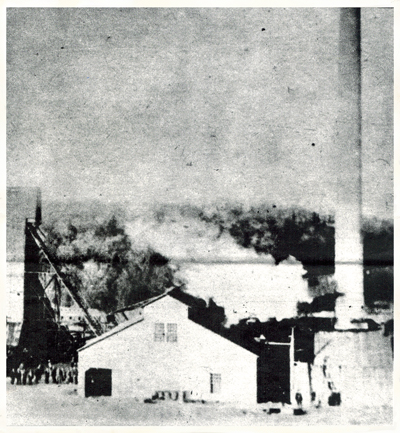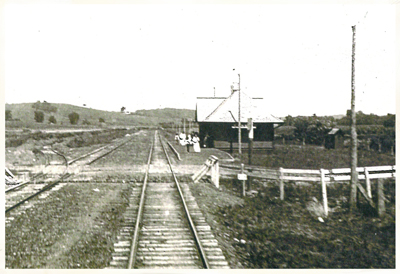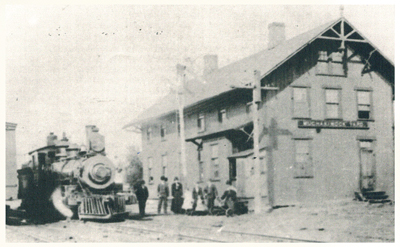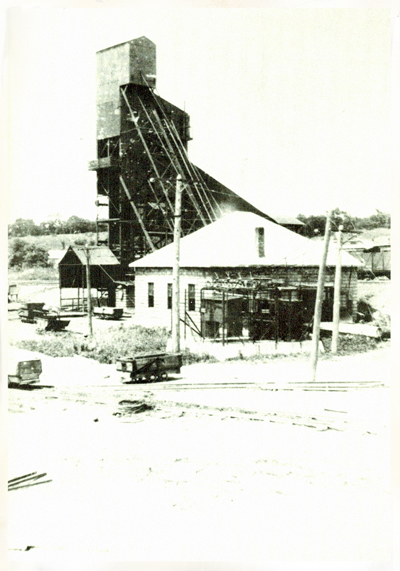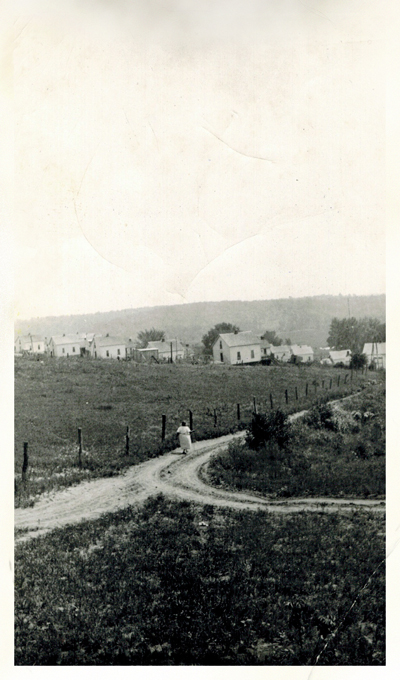Chronology of Consolidation Coal Company in southern Iowa
1871 Mostly small mines until Central Railroad of Iowa – “Hook and Eye” – built in Muchakinock field Output 100-150 tons per day
1872 Chicago & North Western (C&NW) Railroad signed contract with Haiden & Mahaska County Coal Co. to supply 4 carloads per day
1874 McNeil Bros & Graves formed Consolidation Coal Co. (12/15/1874)
1876 4 mines operating near Muchakinock
Total output 1,000 tons per day
1877 Muchakinock Coke Co. purchased mine “slack,” but high sulfur content
1879 1st labor strike over wages
Hobie Armstrong traveled to Virginia to hire Negro strike breakers
1880 1st blacks arrived in group of 75
Excelsior Mining Co. hired blacks in large numbers
90% of 4,800 population was black?
1881 Consolidation Coal sold to C&NW (3/30/1881)
Mr. J.E. Buxton of Boone was manager
C&NW owned coalfield near What Cheer (Star Coal & Mining Co.)
1884 Railroad line from What Cheer to Muchakinock was started (4/5/1884)
1884 Railroad completed from Belle Plaine to Muchy (9/1884)
Output 300 carloads daily from Muchy (25 to 30 carloads per train)
1894 #8 Consolidation mine sank, NW of Givens (formerly Eureka)
Output 700 tons per day – closed 1901
1899 Prospector Isaac Cobb explored Buxton coal field = #10 shaft (3/1899)
Consolidation purchased 10,000 acres of coal land in Mahaska & Monroe Counties – ultimately 30,000 acres
1900 Consolidation #6/#7 closed - #8/#9 still open
1900 C&NW operated train from Muchy to near Buxton *#10 three miles to south of Buxton Bridge over Des Moines River at Eddyville (10/18/1900)
1901 #10 in full production – began sinking #11 (2 miles south of Buxton) (1/25/1901)
1902 Mines #12 & #13 began production
1903 C&NW formed Superior Coal Co. – shifted exploration to Staunton, Illinois – Benld Illinois area
Illinois coal contained fewer impurities, i.e. sulfur and produced less ash – fields larger
1905 Union Mine (Royal Coal Co.) one mile North Buxton remained open until 1932 – longest of any mine in Buxton field
1908 #11 & #13 closed - #14 & #15 mines opened
1909 No new mines
Consolidation Mines increased from 1,000 tons (2 million pounds) to 1,500 tons per day
Railroad coal constant demand – stable work – heating coal was seasonal
1911 Consolidation Mines being worked out in Buxton field
1912 Busy year in Buxton field – Consolidation closed #10 & #14 and opened #16 & #17
1913 Mine #15 closed – Consolidation to new fields in Peoria, Illinois
1913 New railroad named Iowa Southern – 25-mile branch from Lovilla to Consolidation mine #18 (Consol) (1/1/1913)
Followed Bluff Creek to Lovilla
Followed White’s Creek from Lovilla – trans under north/south tracks of CB&D and Wabash with no connection
1914 #18 mine put in to operation (6/1914)
Four 260 horsepower steam generators, 155-foot smokestack. Boiler held 30 million gallons of water
150-foot deep shaft – six-foot vein of coal
Used steel beams rather than timbers
Houses being moved from Buxton
Big cut – 45 foot wide and 18 foot deep cut to cross the divide between Bluff Creek and Cedar Creek while passing under Burlington and Wabash railroads south of Lovilla
1914 New Des Moines bridge was completed – route complete from 18 to Belle Plaine’s south yard (2/1914)
1914 Coal dust explosion at mine #12 – killing two and leaving 20 mules dead at bottom of shaft – since coal virtually gone - #12 not re-opened (3/18/1914)
1916 #18 starts hoisting coal (8/1916)
1917 Consolidation #16/#17 closed – only lasted three years
Consolidation left with only #18 mine in Consol
1917 John Reese General Manager of C&NW coal properties announced start working on 233 foot deep shaft for mine #19 (1/11/1917)
Electric current generated in powerhouse of mine #18 (two miles away)
1917 Rex 5 opened (three miles NE from Consol)
1917-
1923 Active mines in Buxton and Consol fields were steady
Arrangements being made for #20 – company headquarters to Bucknell
1923 C&NW changed all plans – all coal purchases from Iowa would cease – all coal from Illinois
CM STP&P switched from Iowa coal to Indiana coal
1924 #18/#19 sold to Superior Coal Co. – the company C&NW had formed in 1903 to develop Illinois coalfields
1926 Rex 5 reopened with ability to supply coal to commercial customers rather than C&NW – required new equipment for crushing and screening smaller sized coal
Rex 5 closed July 1935 state law required all abandoned mine shafts to be refilled
1925 Consolidation Coal Co. dissolved firm and sold all stock to Superior Coal Co. of Gillespie, Illinois (11/23/1925)
1927 #18 ran out of coal - #19 closed - #20 never opened (3/1927)
1935 C&NW closed railroad to Rex 5 (25 cars per day) (3/6/1935)
1934 Floods (7/4/1934)
1936 Rails removed (7/6/1936)
Compiled by Gordon R. Peterson July, 2009
Source – North Western LinesSpring 1998 “The Story of Chicago & Northwestern’s South Line”
Consol Coal Fields Consolidation Coal Co.
(Superior Coal Company) 1914-1927
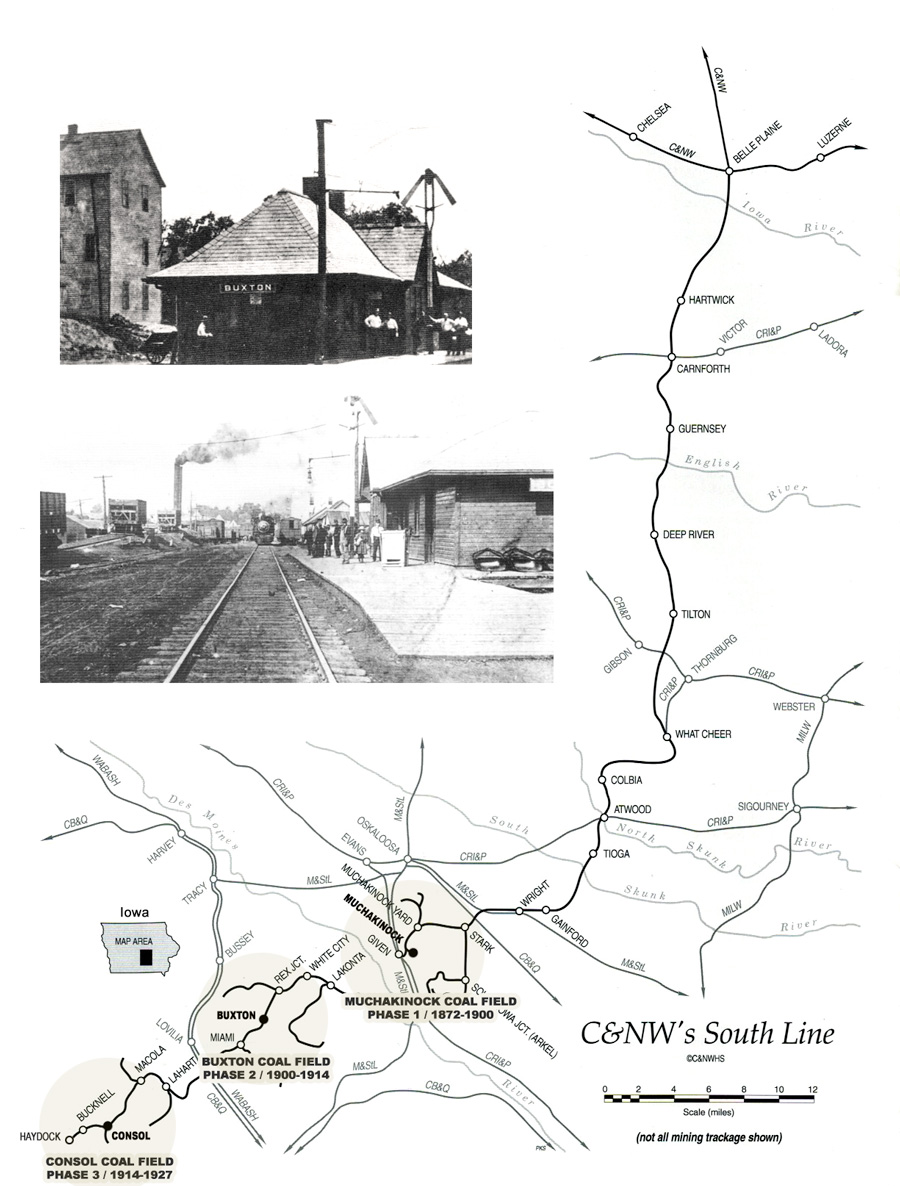
Muchakinock Coal Fields Consolidation Coal Co. 1872-1900
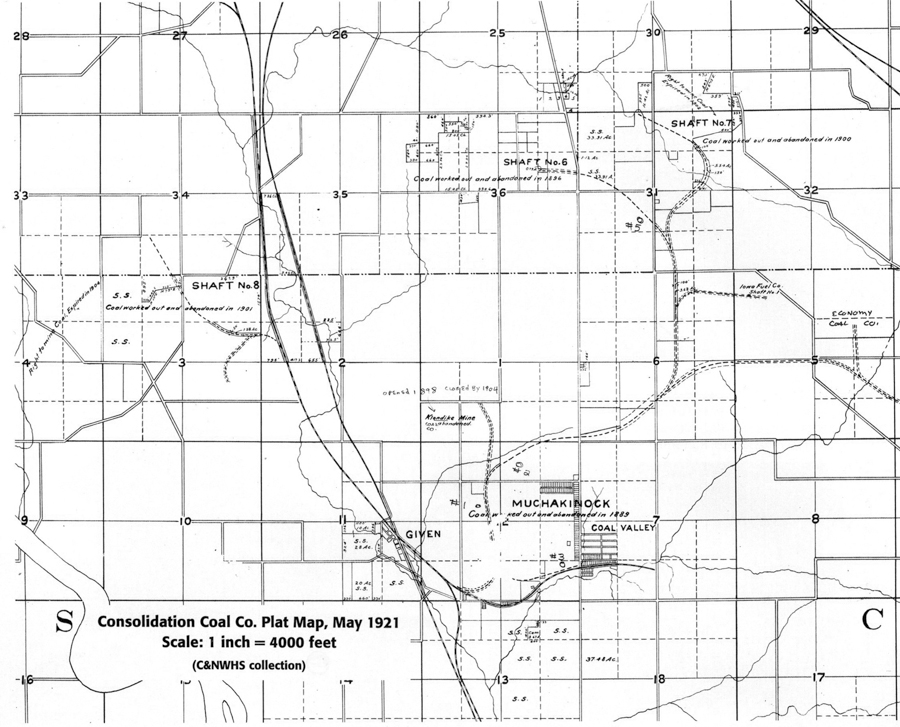
Buxton Coal Fields Consolidation Coal Co. 1900-1917
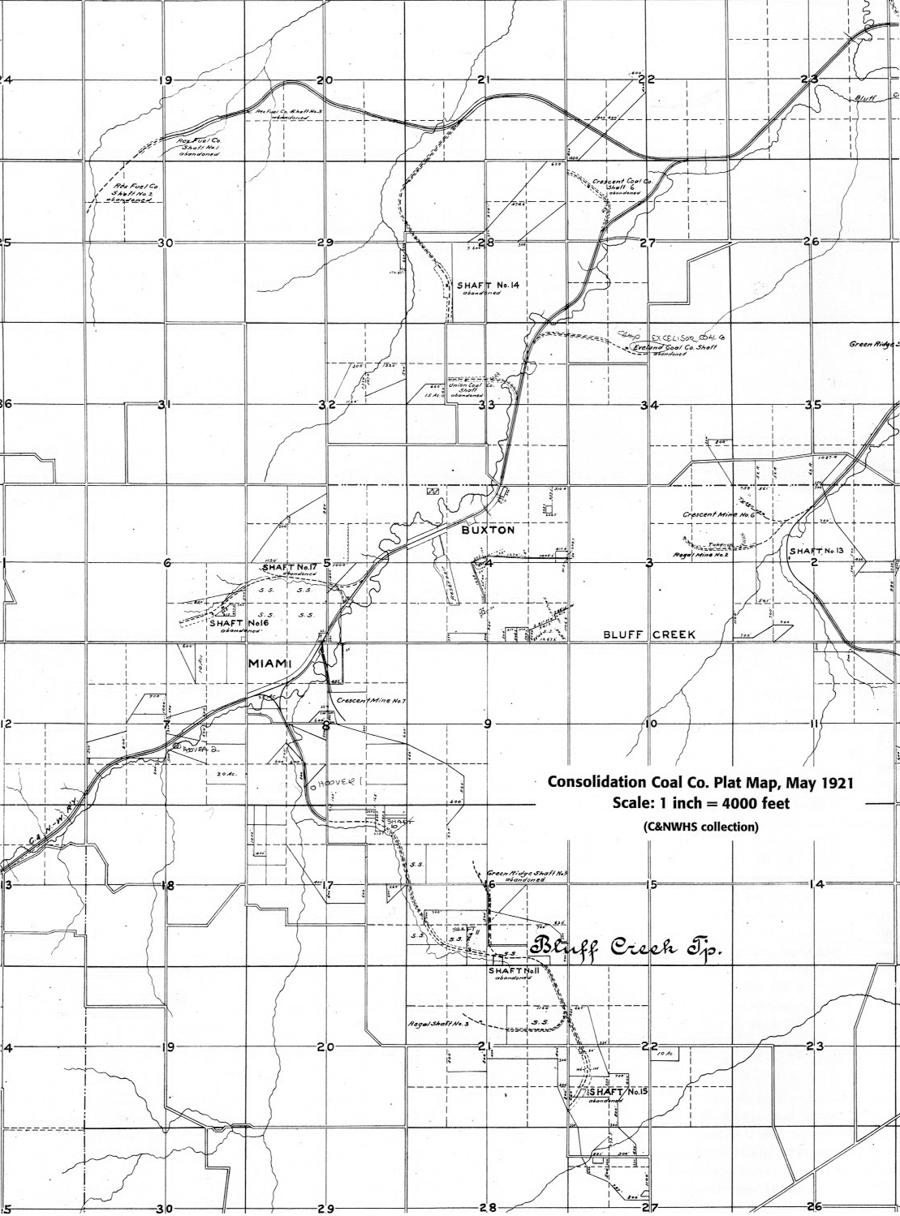
Consol Coal Fields Consolidation Coal Co.
(Superior Coal Company) 1914-1927
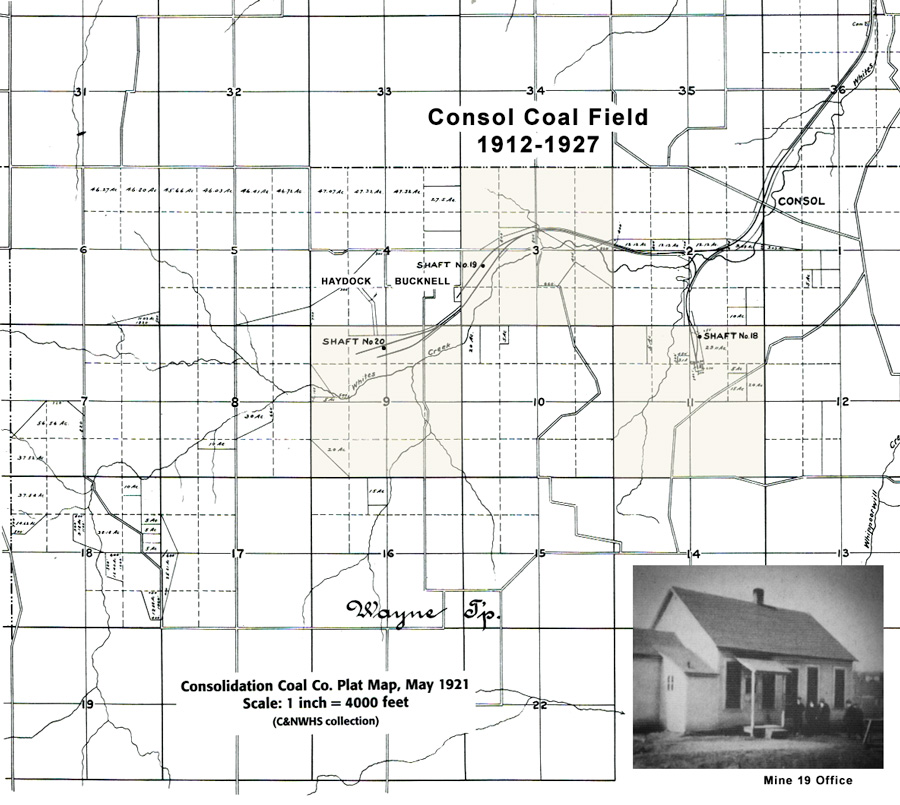
Mine Shaft #18 - South West of Consol 1 mile, section 11 on map.
Mine Shaft #19 located in Bucknell section 3 on map.
Mine Shaft #20 located in Haydock section 9 on map.

